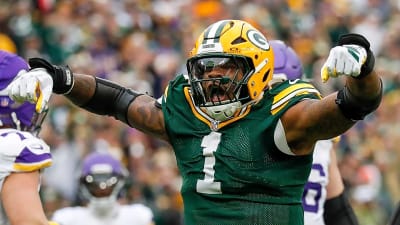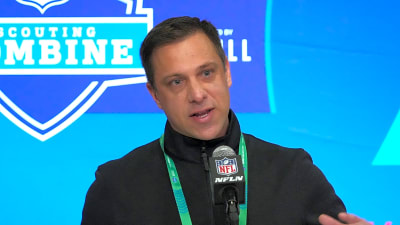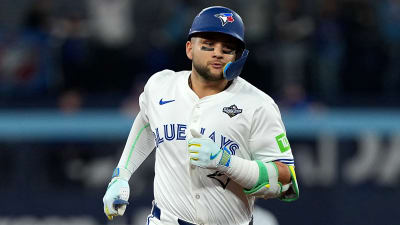- Home
- Quizzes
- My Quiz Activity
- Newsletters
- MY FAVORITES
- Add Sports/Teams
- SPORTS
-
NFL
- NFL Home
- Arizona Cardinals
- Atlanta Falcons
- Baltimore Ravens
- Buffalo Bills
- Carolina Panthers
- Chicago Bears
- Cincinnati Bengals
- Cleveland Browns
- Dallas Cowboys
- Denver Broncos
- Detroit Lions
- Green Bay Packers
- Houston Texans
- Indianapolis Colts
- Jacksonville Jaguars
- Kansas City Chiefs
- Las Vegas Raiders
- Los Angeles Chargers
- Los Angeles Rams
- Miami Dolphins
- Minnesota Vikings
- New England Patriots
- New Orleans Saints
- New York Jets
- New York Giants
- Philadelphia Eagles
- Pittsburgh Steelers
- San Francisco 49ers
- Seattle Seahawks
- Tampa Bay Buccaneers
- Tennessee Titans
- Washington Commanders
-
MLB
- MLB Home
- Athletics
- Arizona Diamondbacks
- Atlanta Braves
- Baltimore Orioles
- Boston Red Sox
- Chicago White Sox
- Chicago Cubs
- Cincinnati Reds
- Cleveland Guardians
- Colorado Rockies
- Detroit Tigers
- Houston Astros
- Kansas City Royals
- Los Angeles Angels
- Los Angeles Dodgers
- Miami Marlins
- Milwaukee Brewers
- Minnesota Twins
- New York Yankees
- New York Mets
- Philadelphia Phillies
- Pittsburgh Pirates
- San Diego Padres
- San Francisco Giants
- Seattle Mariners
- St. Louis Cardinals
- Tampa Bay Rays
- Texas Rangers
- Toronto Blue Jays
- Washington Nationals
-
NBA
- NBA Home
- Atlanta Hawks
- Boston Celtics
- Brooklyn Nets
- Charlotte Hornets
- Chicago Bulls
- Cleveland Cavaliers
- Dallas Mavericks
- Denver Nuggets
- Detroit Pistons
- Golden State Warriors
- Houston Rockets
- Indiana Pacers
- Los Angeles Clippers
- Los Angeles Lakers
- Memphis Grizzlies
- Miami Heat
- Milwaukee Bucks
- Minnesota Timberwolves
- New Orleans Pelicans
- New York Knicks
- Oklahoma City Thunder
- Orlando Magic
- Philadelphia 76ers
- Phoenix Suns
- Portland Trail Blazers
- Sacramento Kings
- San Antonio Spurs
- Toronto Raptors
- Utah Jazz
- Washington Wizards
-
NHL
- NHL Home
- Anaheim Ducks
- Boston Bruins
- Buffalo Sabres
- Calgary Flames
- Carolina Hurricanes
- Chicago Blackhawks
- Colorado Avalanche
- Columbus Blue Jackets
- Dallas Stars
- Detroit Red Wings
- Edmonton Oilers
- Florida Panthers
- Los Angeles Kings
- Minnesota Wild
- Montreal Canadiens
- Nashville Predators
- New Jersey Devils
- New York Islanders
- New York Rangers
- Ottawa Senators
- Philadelphia Flyers
- Pittsburgh Penguins
- San Jose Sharks
- Seattle Kraken
- St. Louis Blues
- Tampa Bay Lightning
- Toronto Maple Leafs
- Utah Mammoth
- Vancouver Canucks
- Vegas Golden Knights
- Washington Capitals
- Winnipeg Jets
- NCAAF
- NCAAM
- Olympics
- Boxing
- Entertainment
- Lifestyle
- Golf
- MMA
- Soccer
- Tennis
- Wrestling
- Sports Betting
- More Sports
- RESOURCES
- My Account
- YB on Facebook
- YB on Twitter
- YB on Flipboard
- Contact Us
- Privacy Policy
- Terms of Service

Ranking the hype around every NBA No. 1 draft pick
The buzz around Zion Williamson has hit historic levels and is preparing to boil over as the NBA Draft draws near. But how does the buildup around the former Duke phenom stack up to the pre-draft hype around No. 1 picks of the past? Here's a look at each of the NBA's lottery era top picks and how much excitement surrounded them on their way to meet the commissioner at the podium.
35. Anthony Bennett, 2013
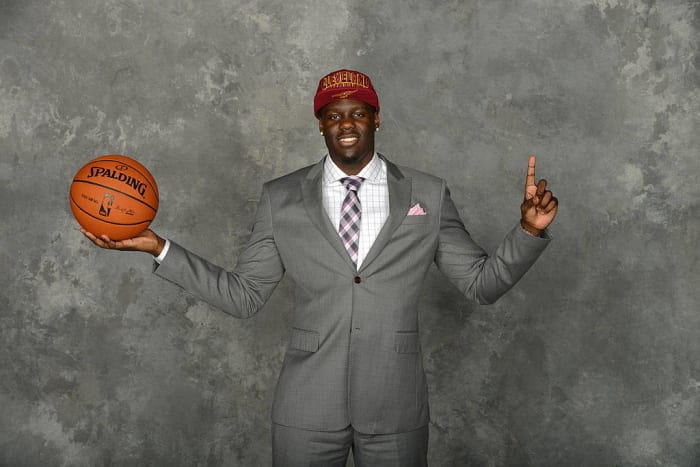
The Cavs called Bennett’s name first overall in the most stunningly confused moment in NBA Draft history. In fact, so confusing was his selection that Bennett had not even spoken with the Cavs leading into the draft and said he was "as surprised as anyone else." So what followed should not have come as much of a surprise either, as Bennett showed up out of shape and never cracked the starting lineup. He averaged 4.2 points over 52 games before being thrown into the Kevin Love/Andrew Wiggins deal the following season. He currently is in his third season in the G-League.
34. Michael Olowokandi, 1998

Olowokandi’s story is one of many regularly emerging from ambiguous ranks. He walked on at Pacific and paid for his first two years of school before eventually having his number retired after averaging 22 points and 11 rebounds and being named Big West Conference Player of the Year as a senior. The Clippers elected to select the 7-footer in the 1999 draft over the likes of college stars Vince Carter, Paul Pierce, Antawn Jamison and Raef LaFrentz, as well as eventual top 10 all-time scorer Dirk Nowitzki. "The Kandi man" eventually became a solid rotational player but otherwise a prototypical upside reach based purely on his height.
33. Andrea Bargnani, 2006

Bargnani’s tall frame and ability to shoot from distance caught the attention of international scouts, who at the time were scouring the globe trying to find the next Dirk Nowitzki. The 7-foot Italian’s upside was enough to convince the Toronto Raptors to use the top pick on him, on the heels of him being named the EuroLeague’s best 22-and-under player in 2006. Bargnani’s surprising selection made him the first continental European player selected No. 1 overall.
32. Karl Anthony-Towns, 2015

Stashed among one of the deepest college rosters of all time, which ultimately produced seven NBA Draft declarations from its ranks, Towns’ star was not one that shined the brightest in college. Although he played just 21 minutes per game and averaged 10.3 points and 6.7 rebounds, his talent emerged, especially in the NCAA Tournament. The Minnesota Timberwolves took note and wisely made Towns the first top overall selection in team history, and he has gone on to become a two-time All-Star in his young career.
29. Andrew Bogut, 2005
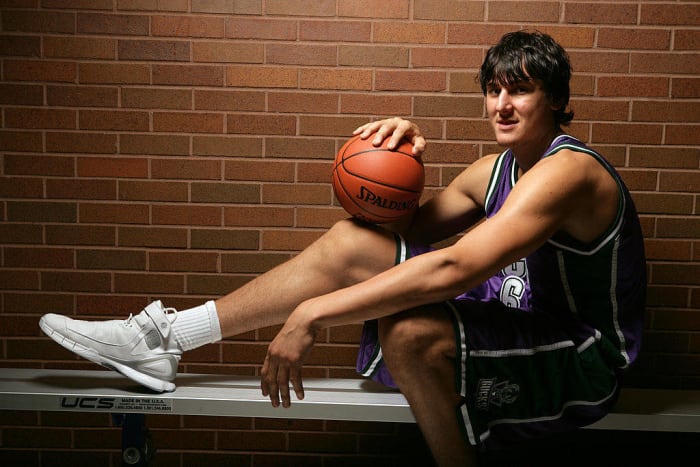
Bogut averaged 20.4 points per game and 12.2 rebounds while shooting 62 percent from the field during a sophomore season when he would be named a first-time All-American. The Milwaukee Bucks landed the first overall pick that spring and chose Bogut over a pair of future All-Star guards in Chris Paul and Deron Williams. Bogut also became the first Australian-born player to ever be taken No. 1. Kyrie Irving and Ben Simmons would later follow in those footsteps.
31. Markelle Fultz, 2007

Fultz was an all-encompassing talent for the Washington Huskies as a freshman point guard, averaging 23.2 points, 5.9 rebounds and 5.7 assists per game. Although his team went a dreadful 9-22, Fultz's talent shined through, as he was named a third-team All-American. The Philadelphia 76ers chose Fultz to became the third leg of their rebuilding "Process" alongside Ben Simmons and Joel Embiid. However, an odd shoulder injury followed by a controversial rehab and recovery road saw Fultz traded away after two years and 33 games.
29. Joe Smith, 1995

Smith spent two years at the University of Maryland, averaging 20.2 points, 10.7 rebounds and three blocks for his career. In his sophomore season he was named National Player of the Year and to various All-American teams by various outlets, as well as ACC Player of the Year. The Warriors made Smith the top pick amid a loaded season for power forwards, which included Antonio McDyess (No. 2), Rasheed Wallace (No. 4) and Kevin Garnett (No. 5). Smith played three seasons in Oakland before embarking on a career that saw him play for 12 different franchises, tied for the most all time.
28. Kwame Brown, 2001
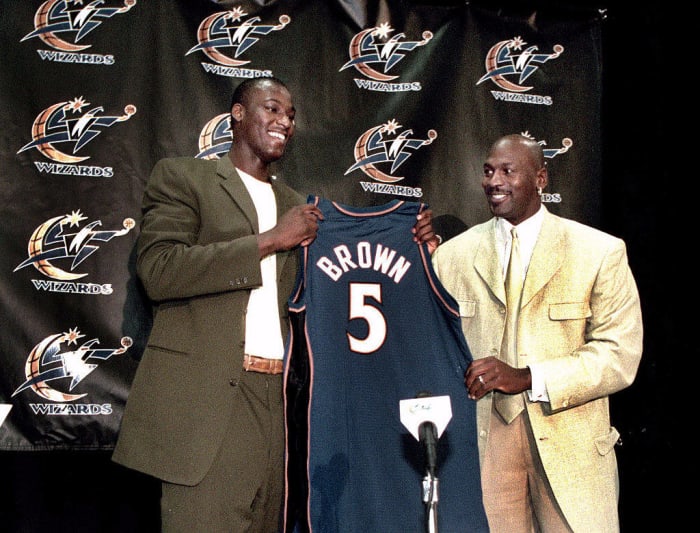
Brown emerged late from the pack of a deep (at the time) high school class of 2001. The Georgia native averaged 20.1 points, 13.3 rebounds and 5.8 blocks as a senior at Glynn Academy and ultimately decided to forgo his commitment to the University of Florida to enter the NBA Draft. It was there that Brown would make history when he became the first high schooler to ever be taken No. 1 overall. It ultimately became the highlight of his career, as Brown never adjusted to the NBA, finishing his career averaging 6.6 points per game.
27. DeAndre Ayton, 2018

Ayton had been listed among the top prep players in the country since his sophomore year and partnered with Marvin Bagley III at Arizona’s Hillcrest Prep. Eventually Ayton would join Bagley as the one and two picks, respectively, in the 2018 draft. Ayton ascended to the top of the 2018 draft after a dominant season with the Arizona Wildcats, averaging 20.1 points and 11.6 rebounds as a one-and-done freshman. His ties to Arizona continued to deepen, as he became the first top overall selection in Phoenix Suns history.
26. Dwight Howard, 2004
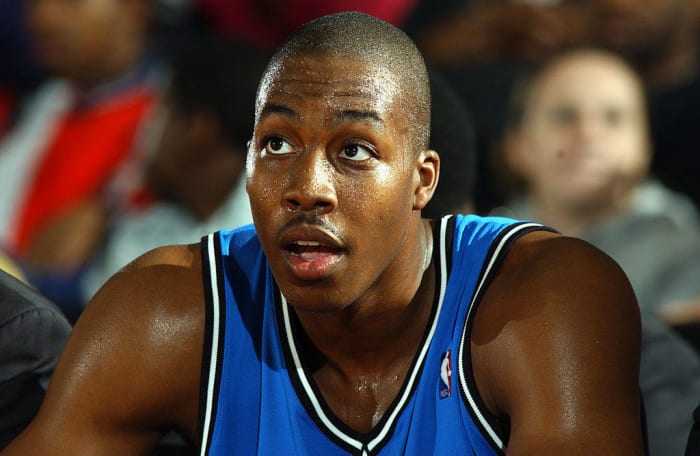
Howard emerged as a force on the prep level as a senior, averaging 25 points, 18 rebounds and eight blocks per game at Southwest Atlanta Christian Academy. He became the top player in the country and was named co-MVP at the McDonald's All-American Game. Despite Howard's quick ascension, Connecticut center Emeka Okafor was long believed to be a foregone conclusion as top pick. However, the Magic instead opted for Howard’s upside, which paid off abundantly. He became a six-time All-Star and three-time Defensive Player of the Year for the Magic and led the team to the NBA Finals in 2009.
25. Brad Daugherty, 1986
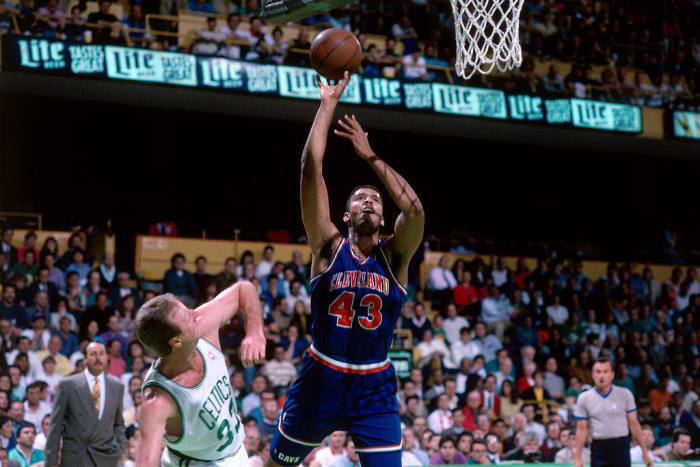
Daugherty was a precocious talent as a youth, joining the North Carolina Tar Heels as a 16-year-old before becoming a two-time All-ACC talent over his final two seasons and an All-American as a senior. Daugherty joined Ron Harper and Mark Price amid an outstanding trio of first-round picks for the Cavs in 1986 and would go on to average 15 points and eight rebounds a night as a rookie. Ultimately, Daugherty would make five All-Star teams and become the Cavs all-time leading scorer before his career ended at age 28 due to back issues.
24. Pervis Ellison, 1989

Ellison was a four-year starter at Louisville, averaging 15 points and eight rebounds for his career. He led the Cardinals to a national championship as a freshman and was named Final Four Most Outstanding Player that season, becoming the first freshman since 1944 to receive the honor. The Sacramento Kings took Ellison with the top pick three years later, although injuries sunk his career before it could take off. He averaged a double-double only once and played for four different teams in his 11-year career.
23. Kenyon Martin, 2000
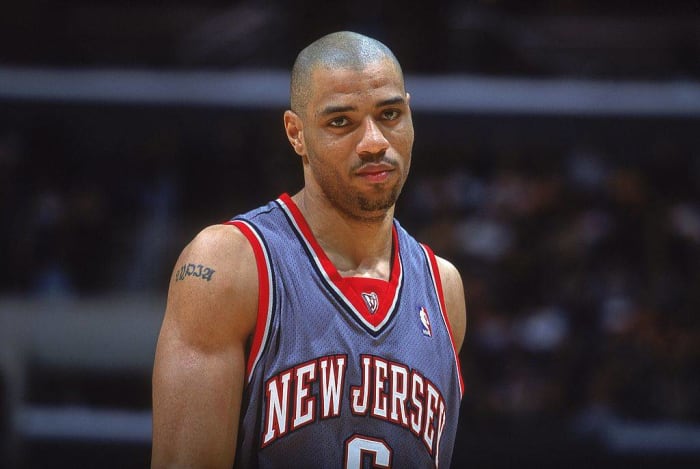
The physical, high-flying Martin was a tour-de-force for Bob Huggins’ Cincinnati Bearcats, averaging 18.9 points, 9.7 rebounds and 3.5 blocks as a senior. He was named National Player of the Year, although a broken leg kept him from playing in the NCAA Tournament. The New Jersey Nets were unswayed by the late injury, however, making Martin the top pick in 2000, and he would go on to become runner-up in Rookie of the Year voting the next year. Martin remains the last American-born player to stay in school all four years and be selected No. 1.
22. Kyrie Irving, 2011

Irving’s ball-handling and creative wizardry made him one of the most exciting players in the country, although he was limited to only eight regular-season games due to a severely injured toe ligament. However, he returned to score 28 points in a Sweet 16 loss. The Cleveland Cavaliers had seen enough to make him their reward after suffering through their first season without LeBron James. Ironically enough, Irving would eventually pair with James to bring the Cavaliers their only championship five years later.
21. Andrew Wiggins, 2014
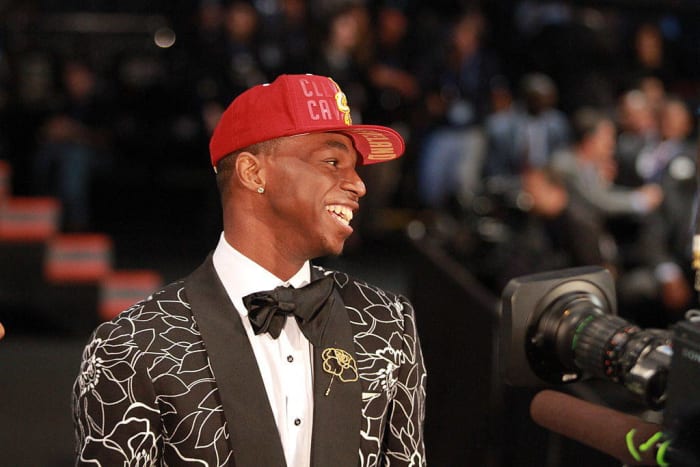
Wiggins' name had been ringing out as a possible No. 1 pick since his early high school days in Canada. He paired with fellow lottery pick Joel Embiid for a season at Kansas before ultimately realizing this potential, as the Cleveland Cavaliers selected the National Freshman of the Year winner with the top overall pick. However, his stay in Cleveland did not reach the regular season, as he was traded to the Minnesota Timberwolves a few months later as part of a three-way deal that sent Kevin Love to the Cavs.
20. John Wall, 2010

Wall was one of the most heralded high school guards in the nation in 2009 and nearly skipped college altogether but instead opted to attend the University of Kentucky. His year in Lexington did nothing but reaffirm his talents, as he averaged 16.5 points, six assists and 1.8 steals for a deep Wildcats team. The Washington Wizards tabbed him as the cornerstone of their rebuilding effort shortly afterward, where he finished runner-up in Rookie of the Year honors to the previous year’s top pick, Blake Griffin.
19. Blake Griffin, 2009

Griffin was one of the most exciting players in college basketball during his two years as an Oklahoma Sooner. The high-flying power forward averaged 22 points and 14.4 rebounds per game his sophomore season, including 15 games of over 20 points and 15 boards, a Big 12 Conference record. Fittingly, the Clippers "leaped" at the chance to land Griffin on draft night, although his impact was delayed due to breaking his knee cap in the preseason. Griffin rallied the following year, however, to win Rookie of the Year honors amid a sensational — albeit delayed — debut season.
18. David Robinson, 1987
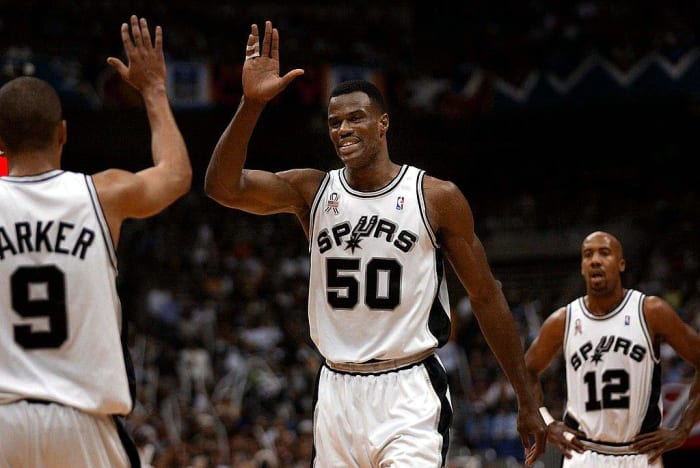
As his nickname indicates, "The Admiral" emerged from one of the most unlikely of locales for an elite NBA prospect: the United State Naval Academy. Robinson reached his full height of 7 feet during his college career while becoming a devastatingly athletic center. He was a two-time All-American and won both the Naismith and Wooden Awards for National Player of the Year as a senior. The San Antonio Spurs made him the top pick in 1987; however they would have to wait for him to play, as he had two years of military service commitments to fulfill before joining the NBA.
17. Elton Brand, 1999

Brand hit the NBA on the heels of being named National Player of the Year, first team All-American and ACC Player of the Year as sophomore, averaging 17 points, nine rebounds and two blocks per game. He also made a mark in history by joining teammates Corey Maggette and William Avery as becoming the first players to declare for the NBA Draft early under the Mike Krzyzewski Duke era. Brand quickly proved he made the right decision with his seamless transition into the NBA, averaging a double-double as a rookie and winning Rookie of the Year honors.
16. Derrick Coleman, 1990

Coleman was a force in the paint for the Syracuse Orangemen, averaging 15 points, 10.7 rebounds and over two blocks as a collegian. He was named Big East Player of the Year as a senior and held the conference’s rebounding record for over 28 years. Entering the NBA, he was hailed as the game’s next great power forward, to follow in the footsteps of Charles Barkley, Bob Pettit and Karl Malone. While he did show flashes of that considerable potential — averaging a double-double in four of his five years with the New Jersey Nets — a lack of work ethic ultimately kept him from reaching his full potential.
15. Danny Manning, 1988

Manning was one of the most dominant collegiate players of the 1980s as a member of the Kansas Jayhawks, becoming the school’s all-time leader in points and rebounds as well as the Big Eight Conference’s all-time leading scorer. Manning led Kansas to a national championship in 1988, and the Los Angeles Clippers selected him first in the 1988 NBA Draft shortly afterward. Knee injuries hampered Manning’s career, as did the perennially sorry state of the Clippers. However, he did become a two-time All-Star and averaged double digits in points the first 10 years of his career.
14. Larry Johnson, 1991

Johnson was at the heart of a sensational UNLV team that reached consecutive Final Fours in 1990 and 1991, winning the national title in ’91. Johnson won the Wooden Award as National Player of the Year in 1991, after averaging 21 points and 11 rebounds in his college career. Despite being listed at 6-foot-7 at a time when big men ruled the roost in the NBA hierarchy, the Hornets were still wooed by the strength and athleticism of Johnson and made him the top pick. He was instantly one of the NBA’s most marketable players, with his Converse "Grandmama" ads remaining among the most memorable in league history.
13. Glenn Robinson, 1994

The Big Dog put on one of the most impressive scoring seasons in NCAA history his senior season as a Purdue Boilermaker. Robinson averaged 30.3 points and 11.2 rebounds per game, becoming the 15th player in history to top 1,000 points in a season. It was a performance so dominant that it prompted the Milwaukee Bucks to call his name ahead of both Jason Kidd and Grant Hill, one of the most impressive groups of top-three picks in history. Robinson signed the richest-ever NBA rookie contract, at 10 years and $68 million, a year before the NBA imposed a rookie salary cap structure.
12. Derrick Rose, 2008
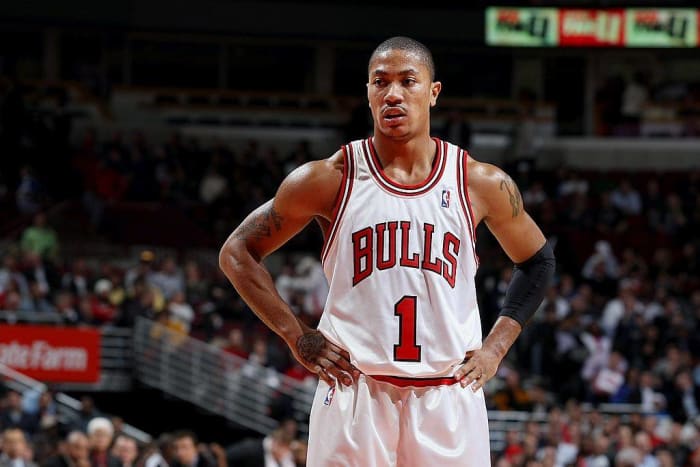
There has never been a better case of draft night synchronicity than when the Chicago Bulls won the 2012 Draft lottery, which gave them the chance to land one of the city’s best and most beloved high schoolers in history in Derrick Rose. Rose starred at Chicago’s Simeon High, before leading the University of Memphis to the Final Four and a school-record 38 wins as a freshman. Rose’s arrival in Chicago saw him take the team back to a level of success that had been absent since the Jordan era, and he became the youngest league MVP in history by his third season.
11. Ben Simmons, 2017
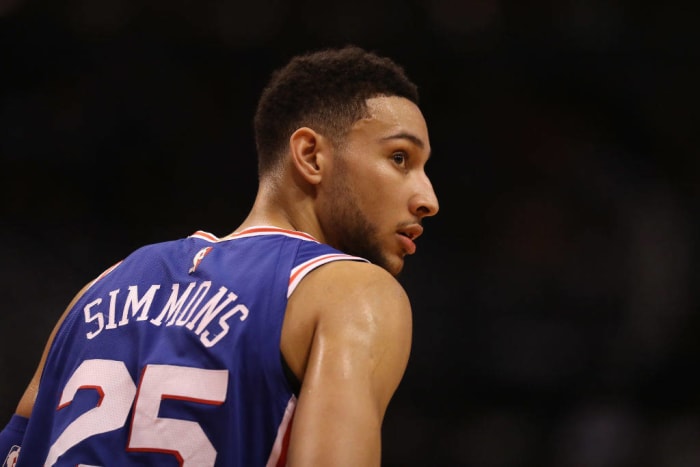
Simmons was one of the most discussed and followed high school prospects in recent memory. With his versatility and height, he dominated all areas of the floor, an ability that carried over to his college career at LSU. Simmons finished in the top five of the SEC in points, rebounds, assists, field-goal percentage and steals and was named a first-team All-American despite the Tigers missing the NCAA Tournament. The Philadelphia 76ers selected Simmons with the first pick, an honor that many felt he would have taken had he been allowed to declare for the draft directly out of high school the year prior.
10. Greg Oden, 2007

Oden spent much of his high school career being heralded as one of the best big man prospects of the past quarter century. He made good on that as a freshman at Ohio State, leading the Buckeyes to the national championship game and being named a first-team All-American. The Portland Trail Blazers took Oden over fellow freshman All-American Kevin Durant, a decision that soon after would be made to look foolish, to say the least. Oden missed his entire rookie season due to knee surgery, the first of a long list of injuries that saw him miss four full seasons and play in only parts of three.
9. Yao Ming, 2002

The legend of Yao began to buzz well before he set his considerable sights on the NBA. The 7-foot-6 Ming had averaged 32 points and 19 rebounds per game in his final season with the Shanghai Sharks and instantly became a talent whom NBA teams salivated over. The Houston Rockets leaped at the chance to land the one-of-a-kind talent despite some uncertainty whether he would be released from his contract in Shanghai. Ming ultimately did make the jump, was voted a starter in the All-Star Game as a rookie and played an instrumental role in immediately expanding the NBA’s day-to-day popularity in China.
8. Allen Iverson, 1996

Iverson hit the courts of the Big East Conference like a bolt of lightning, taking the Georgetown Hoyas to the Sweet 16 as a freshman and to the Elite Eight the following year. His dynamic, slashing scoring ability made the Sixers look past his height at his undeniable impact, making him the shortest No. 1 pick in history. On the court he instantly became the most exciting player in the NBA, simultaneously leading a cultural revolution in style and image. Iverson would go on to break a host of rookie scoring records in Philly and win Rookie of the Year honors.
7. Tim Duncan, 1997
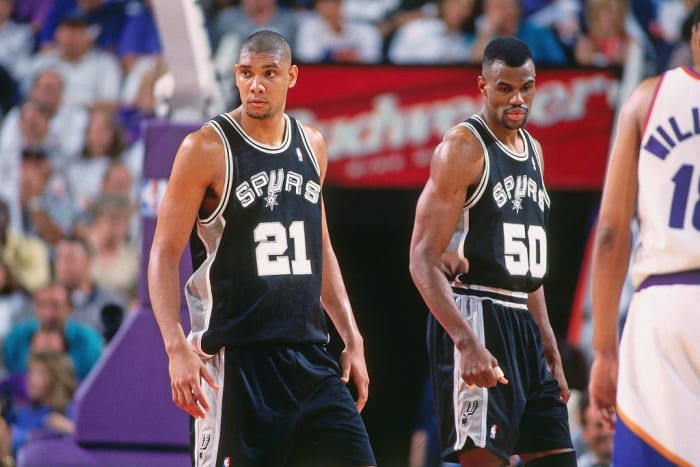
There was no doubt who would come off the board first in 1998, as Duncan would likely have been the top pick the year before as well. His four-year stint at Wake Forest was a dominant one, with him being twice named ACC Player of the Year and picking up a slew of National Player of the Year Awards as a senior. Coming off a rare lottery-eligible season due to a rash of injuries, the Spurs had the good fortune of landing the top pick at the perfect time. Paired alongside a former MVP in David Robinson, the future two-time winner of the same honor formed a towering duo that would lead the Spurs to their first title just two seasons later.
6. Anthony Davis, 2012

The Brow is arguably the most comprehensively dominant college basketball player of the last decade. In his sole season as a Kentucky Wildcat, Davis was consensus National Player of the Year, SEC Player of the Year and Final Four Most Outstanding Player, and he led the Wildcats to a national championship. He is the only freshman in history to complete this series of events and firmly established himself as the runaway best player in the country. The New Orleans Hornets (soon to be Pelicans) selected the shot-blocking prodigy quickly and immediately began the rebranding of their organization around him.
5. Chris Webber, 1993

The Orlando Magic landed the first pick for a second consecutive year, in 1993, and selected Webber, who became the first sophomore since Magic Johnson in 1979 to be taken No. 1 overall. However, they quickly traded him on draft night to the Golden State Warriors in exchange for Penny Hardaway and three future first-round picks, another testament to the buzz surrounding him. He would win NBA Rookie of the Year the following season but be traded yet again following that year due to a tumultuous relationship with Warriors coach Don Nelson.
4. Shaquille O'Neal, 1994

Nobody had ever seen anything quite like Shaq, who had enforced an equally bruising and athletic style of basketball at LSU that all but guaranteed him to be a sensation at the next level. Through their three years of existence, the Magic had won just .284 percent of their games but saw their fortunes quickly change when they landed the top pick in the 1992 draft. There was no hesitation in grabbing O’Neal, who transformed basketball in Orlando and the NBA as a whole, folding and shattering backboards while averaging 23.4 points and leading the NBA in rebounds and blocks per game as a rookie.
3. Zion Williamson, 2019

Accompanied by unbelievable footage of his thunderous dunks and hulking frame as a high schooler, Williamson is the first true amateur legend born of the social media era. His arrival at Duke University put a further stamp on his already growing legend, as Zion was the headliner of arguably the greatest recruiting class in history. Williamson lived up to the hype and more, averaging 22.6 points, 8.9 rebounds and at least 2.5 jaw-dropping moments per night, it seemed. He won AP National Player of the Year and ACC Player of the Year and is the runaway choice to be the top overall pick in 2019.
2. Patrick Ewing, 1985

Ewing’s arrival in the NBA heralded the start of a brand-new era: the NBA Draft Lottery. One of the biggest superstars in the history of college basketball while at Georgetown, Ewing’s arrival in the NBA was one of the most anticipated events in years. In an outcome that still fires up some conspiracy theorists to this day, commissioner David Stern reached into a vat of envelopes and selected the New York Knicks. It ensured that one of the league’s instant stars would be a member of one of its highest profile franchises, which Ewing was for the next 15 seasons.
1. LeBron James, 2003

There has been no more talked about and anticipated amateur athlete in history than James, who has since made the hype somehow seem understated. The Akron, Ohio, native was named Mr. Basketball in the Buckeye State three consecutive years starting as a sophomore, and he led his high school team, the St. Vincent-St. Mary Fighting Irish, to three Division II state titles. Meanwhile, the hometown Cleveland Cavaliers put on a thorough tanking effort, going 17-65 in hopes of landing the prodigy in their backyard, an effort which was ultimately successful. LeBron would win Rookie of the Year and the rest, you would say, is history…still in the making.
Matt Whitener is St. Louis-based writer, radio host and 12-6 curveball enthusiast. He has been covering Major League Baseball since 2010, and dabbles in WWE, NBA and other odd jobs as well. Follow Matt on Twitter at @CheapSeatFan.
More must-reads:
- The most fun destinations for Zion, ranked
- Zion Williamson expected to be in Chicago for NBA Draft lottery
- The 'Youngest 40-point NBA games' quiz
Breaking News
Trending News
Customize Your Newsletter
 +
+
Get the latest news and rumors, customized to your favorite sports and teams. Emailed daily. Always free!
PRIVACY POLICY EDITORIAL POLICY CONTACT US
ABOUT YARDBARKER TERMS OF SERVICE
Use of this website (including any and all parts and
components) constitutes your acceptance of these
Terms of Service and Privacy Policy.
This site is for entertainment purposes only.
There is no gambling offered on this site.
Gambling Problem? Call 1-800-Gambler.



